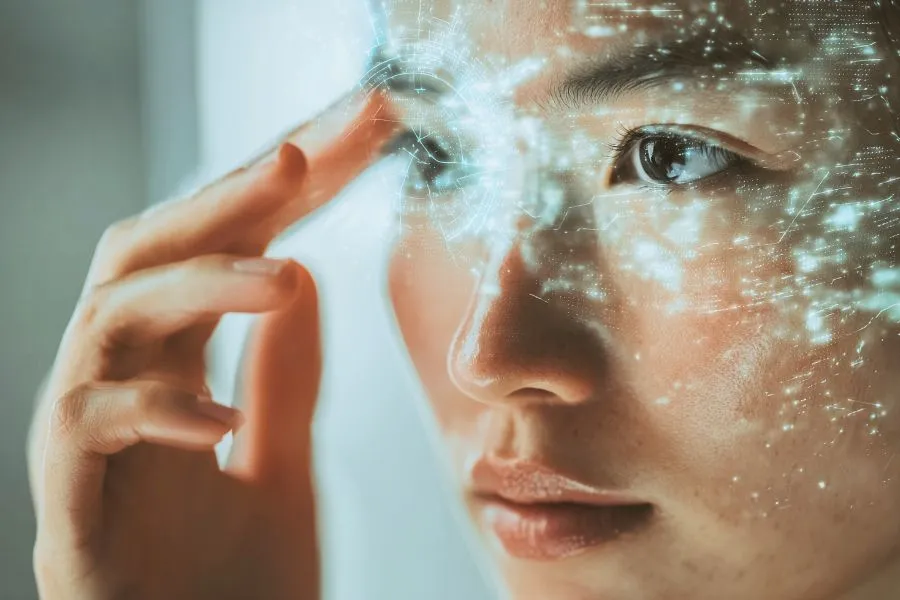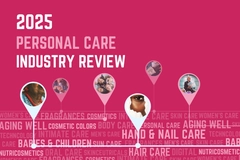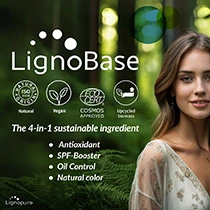Asia’s humanized tech push: Revieve and Dr’s Secret expand hybrid AI skin care model
Key takeaways
- Dr’s Secret is expanding its AI skin care advisor into Malaysia and Indonesia after strong regional engagement.
- The Revieve-backed platform blends AI analysis with real human advisors, reflecting Southeast Asia’s demand for experience-driven beauty.
- Revieve says the region values emotionally guided, humanized tech, pushing brands toward service-focused innovation.

Singapore skin care brand Dr’s Secret is expanding its AI-powered skin analysis platform, Skin Studio AI, with a full-scale rollout underway in Malaysia and Indonesia. The expansion follows strong adoption from smaller rollouts, where Dr’s Secret saw a 31% increase in website traffic and a 49% increase in account signups across Singapore, Malaysia, and Indonesia.
The tool, developed with beauty-tech provider Revieve, uses advanced image analysis to evaluate over 120 skin metrics from a selfie the user uploads. It then provides a personalized routine from Dr Secret’s product lineup.
After completing the digital assessment, each user is connected to a human Skin Buddy advisor. The brand says a hybrid model, where AI analysis is supported by ongoing expert guidance, makes the recommendations more practical. The human connection also maintains long-term engagement beyond the initial online assessment.
Sampo Parkinnen, CEO at Revieve, tells Personal Care Insights that while Western consumers prioritize education and transparency in AI beauty tech, Southeast Asian consumers respond to tech that feels human, relational, and emotionally guided.
“Where AI provides precision, the Skin Buddy delivers context and confidence. They make the experience feel personal, not programmed — something that’s especially important in Asia, where expertise and empathy carry tremendous weight in beauty,” Parkinnen says.
“That human element changes the relationship from one-time interaction to ongoing engagement. It builds loyalty through care — and we’ve seen that reflected directly in metrics like repeat visits and account sign-ups.”
Targeting an emotional audience
There is a divide in how consumers in different regions respond to AI in the beauty industry. Parkinnen explains that in Europe and the UK, consumers are moving toward education, transparency, and sustainability when they choose beauty products. They want tools that simplify routines rather than add new layers of complexity.
Parkinen says shoppers in these Western markets “want proof, purpose, and simplicity,” and scrutinize whether a tool is science-backed and aligned with their values.
“That’s why we see brands like Tropic Skincare and The Inkey List thriving — they’re using digital tools and diagnostics not to overwhelm, but to clarify,” he adds.
.webp) Southeast Asian consumers seek personalized routines supported by both AI insights and human guidance.Parkinnen contrasts Western behavior with that of Southeast Asia. “In Southeast Asia, the dynamic is different — and in many ways, more emotionally attuned.”
Southeast Asian consumers seek personalized routines supported by both AI insights and human guidance.Parkinnen contrasts Western behavior with that of Southeast Asia. “In Southeast Asia, the dynamic is different — and in many ways, more emotionally attuned.”
“The region leads globally in high-tech meets high-touch experiences. Consumers here are incredibly open to innovation, but they respond best when that innovation feels human, intuitive, and emotionally resonant.”
Beauty in the region still carries a strong social dimension, where advice, trust, and community play a major role in purchase decisions. Parkinnen says AI in Southeast Asia “is rarely just a diagnostic — it’s part of a relationship.”
This preference is reflected in Skin Studio AI. It offers a digital skin analysis, but the journey continues when users are connected with real advisors known as Skin Buddies. This turns the experience into guided support rather than a single AI output.
For beauty brands looking to enter the region, Parkinnen suggests prioritizing multiple key areas. AI features should focus on creating a memorable and engaging experience rather than only improving efficiency, he says.
Every interaction should feel personal, “trust grows when users feel seen, not scanned,” Parkinnen adds.
Local adaptation is also essential, as beauty habits, climate conditions, and communication styles vary widely across Southeast Asia — “the closer you align with [local expectations], the faster adoption follows.”
Experience-led beauty
Parkkinen describes Southeast Asia’s skin care landscape as “experience-led” rather than “product-led.” He explains that “when we say ‘experience-led,’ we mean that the journey itself is the luxury.”
.webp) Digital-first beauty journeys are rising in Southeast Asia.In his view, consumers in the region evaluate brands not only by what they offer but by how the entire process feels. This approach shapes everyday beauty decisions.
Digital-first beauty journeys are rising in Southeast Asia.In his view, consumers in the region evaluate brands not only by what they offer but by how the entire process feels. This approach shapes everyday beauty decisions.
He notes that users want effective results but also want steady support from the brands they choose. “Consumers here want results with reassurance — an ongoing dialogue with the brand, not a one-off sale.”
This expectation has driven a shift in regional strategy. Parkkinen calls it “a shift from transaction to transformation.”
“The brands doing this best, from DR’s Secret to newer entrants in Japan and Indonesia, are creating full-circle experiences: diagnosis, education, follow-up, and community.”
For brands entering Southeast Asia, Parkkinen says this experience-driven model highlights a broader shift in expectations. He believes companies must rethink how they deliver value. For brands, this means evolving beyond product innovation into service innovation.
“We think that’s the real future of personalized beauty — not just smarter technology, but more human technology.”












